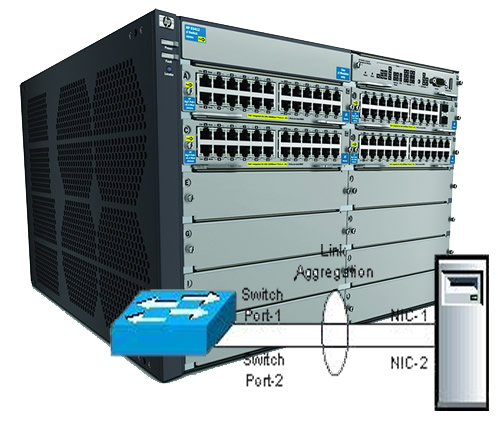If you have a strong Cisco background, then you immediately think of Spanning Tree Protocol when you think of Layer 2 loop protection. Or if you’re keeping abreast of the newest developments, you think of TRILL and SPB. But there are other mechanisms for helping detect loops at layer 2. Here’s one I came across while studying for HP Master ASE: HP Procurve Loop-Protection. Spanning tree is used to ensure a loop-free topology over the LAN. Occasionally a hardware or software failure can cause STP to fail, creating STP/ forwarding loops that can cause network failures where unidirectional links are used. The non-designated port transitions in a faulty manner because the port is no longer receiving STP BPDUs.
In this article we are going to explain what is the MSTP (Multiple Spanning Tree Protocol) procotolo, what are its benefits and how it is configured in HP switches.
What is the MSTP?
The MSTP protocol is an evolution of STP (Spanning Tree Protocol) used to prevent loops in networks where we want to give redundancy through a ring configuration. For those of you who do not know what STP is, you can consult the following link:this article.
Using the MSTP, we were able to improve the utilization of all links in the network. Basically it consists of blocking different links for VLAN groups.
Benefits of using MSTP
The main advantages of using MSTP are the following:
- Load balancing
- És a standardized protocol
- Minimize CPU usage compared to other STP protocols such as PVST.
- Compatible with other STP protocols.
Below is a graph with the diagram of a final MSTP configuration.
 In this example, we see how the traffic of the 100-199 vlans will be blocked in one direction, while the vlans of the 200-299 will be allowed to pass through the blocked path. This improves network performance, since using STP or RSTP, one of these links would never be used.
In this example, we see how the traffic of the 100-199 vlans will be blocked in one direction, while the vlans of the 200-299 will be allowed to pass through the blocked path. This improves network performance, since using STP or RSTP, one of these links would never be used.Design of the MSTP: Regions
An MST region is one that shares the spanning-tree configuration.
The switches will be in the same region if you have the maximum:
- Name of region
- Revision number
- Mapping of VLAN-to-instance
So if we want to have several switches in the same region, what we will do is configure these same parameters in all the switches.
How to configure MSTP in HP switches?
Procurve Spanning Tree
Steps to configure the MSTP in an HP-2530 switch:
- Configure the VLANS
Configure the VLANS
- Define the MST
region
- Define the revision number in the MST region
- Define VLAN-to-instance mapping.
- Define the priority for each
- Define the cost of the path (path-cost)
- Define point-to-point links
- Enable MSTP
Example: Configure MSTP on switch HP 2530
We will take as an example the same scheme as in the aforementioned article.
In this case all switches are HP2530 model.
Design conditions:

Switch A: Root for vlans 100-199

Switch B: Root for vlans 200-299
Switch C: You will have the ports blocked for each instance.
Disable Spanning Tree Hp Switch
Switch A configuration:
mstp name mstp-example
mstp revision 10 mstp revision 10
mstp instance 1 vlan 100 to 199
mstp instance 1 priority 0
mstp instance 2 vlan 200 to 299
mstp instance 2 priority 4096
mstp instance 2 ethe 3/3 path-cost 30000
mstp admin-pt2pt-mac ethe 3/1 to 3/3
mstp start
Spanning Tree Priority Hp Switch

Switch B configuration:
mstp name mstp-example
mstp revision 10 mstp revision 10
mstp instance 1 vlan 100 to 199
mstp instance 1 priority 4096
mstp instance 2 vlan 200 to 299
mstp instance 2 priority 0
mstp instance 2 ethe 3/3 path-cost 30000
mstp admin-pt2pt-mac ethe 3/1 to 3/3
mstp start
Swtich C configuration:
mstp name mstp-example
mstp revision 10
mstp instance 1 vlan 100 to 199
mstp instance 2 vlan 200 to 299
mstp start
With these commands and bearing in mind that the cables are connected correctly, we will have our equipment configured correctly.

If you have any questions, do not hesitate to comment or send me your questions.
See you in the nets!
